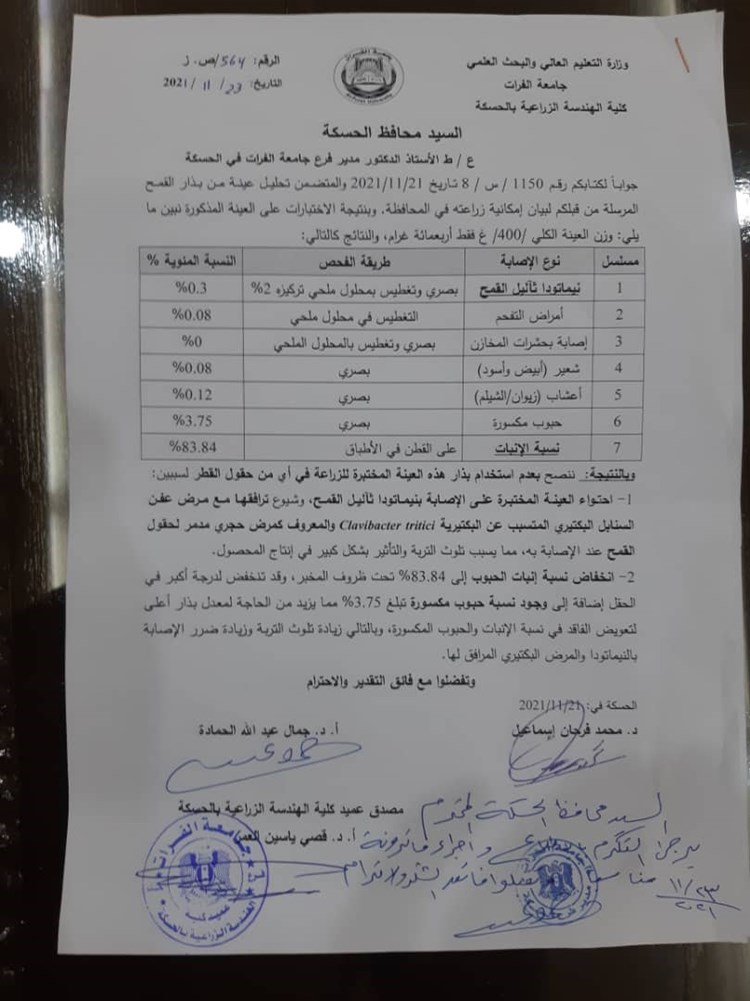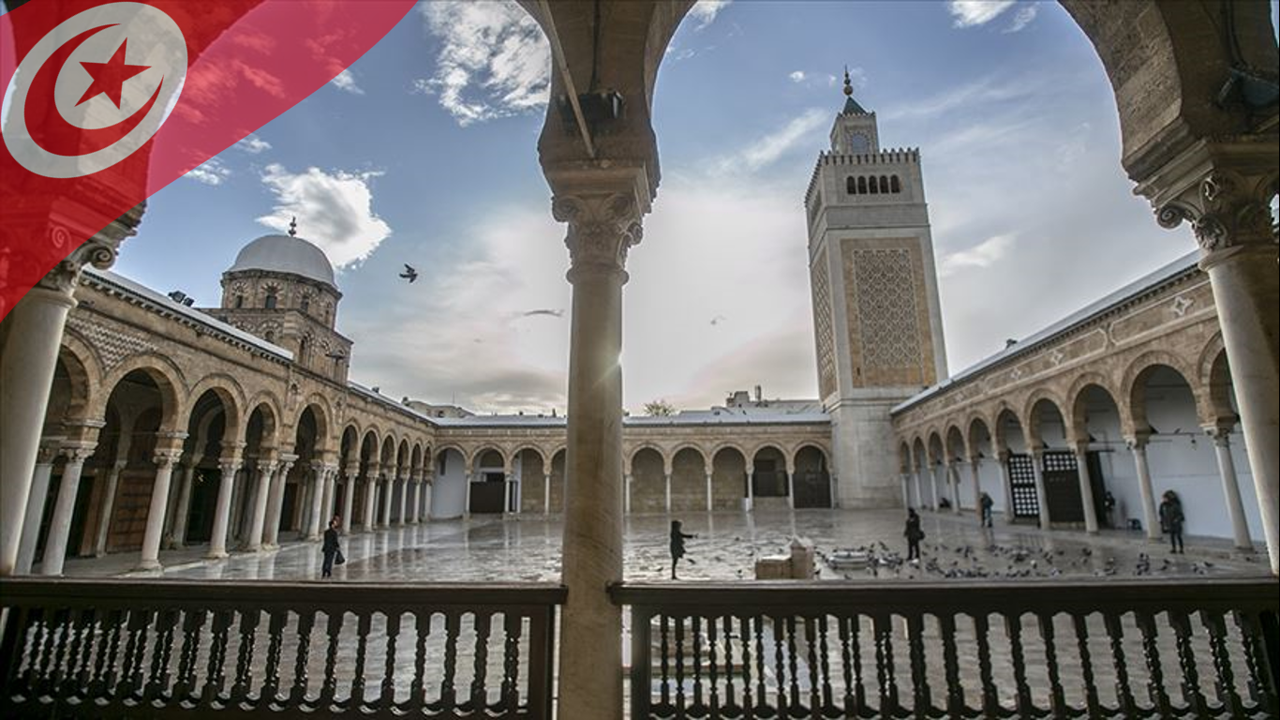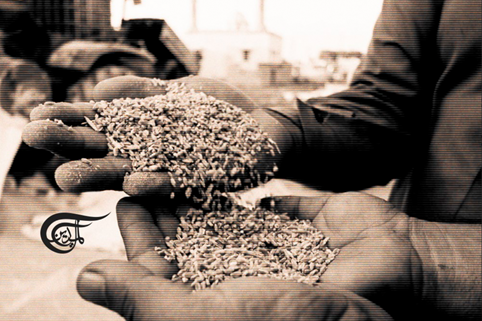Ayham Mara‘ī Source: al-Mayadeen net 25 November 20:28
The American presence in Syria has long record of crimes. Today Washington continued its crimes by sending wheat seeds affected by dangerous agricultural sicknesses. The matter threatens the Syria wheat season for long years.
Suddenly, without any introduction appeared the American insistence of the peasants of al-Ḥasaka province, which counts to be the capital of the grain production in Syria, but also with fears that there that the drought will strike the locals with poverty and lacking. Only to see that the Unites States of America decided to save the dry season and lend seeds solving this free to the locals, so to help them to cultivate their lands.

Indeed, the website of the American embassy in Damascus via its Facebook account announced that 3 thousand tons of disinfected seeds arrived to Northeastern Syria, so to be spread free to the peasants, thus enabling them to cultivate their lands and harvest grain.
According to the post “the United States grants 3 thousand metric tons of high quality seeds to the farmers in Northeastern Syria with the beginning of the anticipated wheat season”. Thus confirming that “these seeds will support hundreds of peasants to produce approximately 32 thousand tons of grain next year. This matter supplies the Syrians with flour, bread and other grain products, so to feed their families and prevent further economic crisis”.
To combat an anticipated wheat shortage this planting season in NE #Syria, @USAID is sending 3K metric tons of quality wheat seeds from Iraq to Syrian farmers. 2021’s wheat harvest was one of the poorest on record; these quality seeds will help prevent a food security crisis. pic.twitter.com/jF2g10XZ4O
— Samantha Power (@PowerUSAID) November 19, 2021
The website of the embassy showed significant care by re-sharing the post several times during less then ten days. This matter was explained as an attempt to convince the peasants to obtain the seeds and use them exploiting the lack of available seeds in the needed quantities, and added to this the difficulty to gain good governmental seeds, in result of the “Kurdish autonomy” prevented the peasants from obtaining the deliveries from the governmental centers.

With this the United States of America would be able to destroy the Syrian economy after suspicions of burning the grain crops in Northern and Eastern Syria in the seasons of 2019 and 2020, in addition to stealing the rare grain types from the “Icarda” agricultural scientific research center in Aleppo, while destroying the infrastructure of electric power plants, water, communications, hospitals and health centers.
The Syrian government swiftly warned about the arrival of the American seeds in an illegal way to al-Ḥasaka province and via the peasants managed to gain samples from the wheat seeds, while the governor of al-Ḥasaka, Ġassān Ḥalīm Halīl formed a study committee professional in agricultural scientific laboratories to know whether they are safe from any agricultural sicknesses.
The committee issued the result of the analysis, which proves “the existence infection by Seed Gall Nematoda, accompanied by bacterial originated rot caused by a bacteria, known as stone sickness destroying the fields. This matter causes the soil to be polluted and in a large extent the production of the field to be infected, to the loss of soil fertility in 83% in laboratory conditions”.

Governor of al-Ḥasaka, Ġassān Ḥalīm Halīl confirmed to al-Mayadeen net that “the tests proved that the seeds are infected by Seed Gall Nematoda in addition to a bacterial rot, which destroys the agricultural fields”.
He pointed out that “the quantity, which entered is 3 thousand tons, which is enough to be spread to all the lands on the Syrian al-Ğazīra, as this sickness spreads from one field to the next”.
Halīl advised that “the peasant not to use these seeds, dispose of them as totally get rid of them, as they destroy the fields on the long term”.
On his on behalf professor in the al-Furāt University in specialized in plant epidemiology and director of board in the University of al-Ḥasaka dr. Ğamāl al-‘Abd Allah said that “a sample of 2500 seeds got examined to find that 6 seeds were infected by Seed Gall Nematode, along with a fungal infection” believing that “the existence of even one seed is enough to spread the disease in the fields, which cannot be used as it pollutes the soil for decades. This will cost the state millions of dollars to threat the infected land areas, which might not even be capable to threat. This matter will lead to making the land terminally infertile for agriculture”.

He revealed that “this type was used in Turkey some years ago and was withdrawn for it was proven to be infected by agricultural sicknesses” believing that “spreading these seeds has unclean political reasons”.
بذار أميركية مسمومة في الحسكة.. ومخاوف من كارثة تنتظر الفلاحين
أيهم المرعي المصدر: الميادين نت 25 تشرين ثاني 20:28
يحظى الوجود الأميركي في سوريا بسِجِلٍّ حافلٍ بالإجرام. اليوم، تُكمل واشنطن إجرامها بإرسال بذارِ قمحٍ مصابة بآفات زراعية خطيرة، الأمر الذي يهدّد موسم القمح السوري لسنواتٍ طويلة.
فجأةً، ومن دون أيّ مقدمات، ظهر الحرص الأميركي على فلاّحي محافظة الحسكة، التي تُعَدّ عاصمة إنتاج القمح في سوريا، مع مخاوفها من أن يصيب الجفاف السكان بالفقر والعوز، لتقرر الولايات المتحدة الأميركية إنقاذ موسم الجفاف، وتقديم بذار معالَجة مجاناً إلى السكان، من أجل مساعدتهم على زراعة أراضيهم
وبالفعل، أعلن موقع السفارة الأميركية في دمشق، عبر موقع “فيسبوك”، وصول 3 آلاف طن من البذار المعقّمة إلى شمالي شرقي سوريا، من أجل توزيعها مجّاناً على الفلاّحين، لتمكينهم من زراعة أراضيهم بمحصولِ القمح
ووفق المنشور، فإنّ “الولايات المتحدة تقدّم 3 آلاف طن متري من بذار القمح العالية الجودة إلى المزارعين شمالي شرقي سوريا، مع بدء موسم زراعة القمح الحرجة”، مؤكداً أنّ “هذه البذار ستدعم مئات الفلاحين، لإنتاج ما يقارب 32 ألف طن من القمح للعام المقبل، الأمر الذي يضمن للسوريين الدقيق والخبز ومنتوجات القمح الأخرى من أجل إطعام عائلاتهم، ومنع مزيد من الأزمة الاقتصادية
وأبدى موقع السفارة اهتماماً لافتاً، من خلال إعادة مشاركة المنشور عدّة مرات، خلال أقل من عشرة أيام، الأمر الذي فُسِّر بأنه محاولة لإقناع الفلاحين بالحصول على البذار والاستفادة منها، مُستغلةً عدم توفار بذار بالكمية الكافية، بالإضافة إلى صعوبة إيصال البذار الحكومية الجيدة، نتيجة منع “الإدارة الذاتية” الكردية، الفلاّحين من تسليم محاصيلهم إلى المراكز الحكومية
ولتكمل في ذلك الولايات المتحدة الأميركية تدميرَ الاقتصاد السوري، بعد شبهات في تسبُّبها بإحراق محاصيل القمح في الشمال والشرق السوريَّين في موسمي 2019 و2020، بالإضافة إلى سرقة أصناف قمح نادرة من مركز البحوث العلمية الزراعية “إيكاردا” في حلب، مع تدمير البُنى التحتية من محطات كهرباء ومياه واتصالات ومستشفيات ومراكز صحية.
وتنبّهت الحكومة السورية سريعاً لوصول بذار أميركية بطريقة غير شرعية إلى محافظة الحسكة، وحصلت عن طريق الفلاحين على عينات من بذار القمح، مع تشكيل محافظ الحسكة، غسان حليم خليل، لجنةً بحثية لفحص العينة في المختبرات العلمية الزراعية، ومعرفة سلامتها من أي آفات زراعية.
وأصدرت اللجنة نتائج الفحص، التي أثبتت “وجود إصابة بنيماتودا ثآليل القمح، مترافقة مع مرض عفن السنابل البكتيري المتسبب نتيجة البكتيريا، والمعروف كمرض حجري مدمر للحقول، الأمر الذي يسبّب تلوث التربة والتأثير، على نحو كبير، في إنتاج الحقول، وانخفاض نسبة إنبات الحقول إلى 83% تحت ظروف المخبر
وأكد محافظ الحسكة، غسان حليم خليل، لـ”الميادين نت”، أنّ “التحاليل أثبتت أنّ البذار مُصابة بنيماتودا ثآليل القمح المترافق مع عفن السنابل البكتيري، وهو مدمر للحقول الزراعية”.
ولفت إلى أنّ “الكمية التي دخلت هي 3 آلاف طن، وهي كافية لنشر الآفة في كل أراضي الجزيرة السورية، لأن هذا المرض ينتقل من حقلٍ إلى آخر”..
ونصح خليل “المزارعين بعدم زراعة هذه البذار وإتلافها والتخلص منها نهائياً، لأنها مُدمّرة للحقول، في المدى الطويل”.
بدوره، بيّن الأستاذ في جامعة الفرات، في القسم المختص بوقاية النبات، ورئيس فرع الجامعة في الحسكة، د. جمال العبد الله، أنّه “تمّ فحص عينة من 2500 حبّة بذار، ليتبين وجود 6 حبات مصابة بآفة نيماتودا ثآليل القمح، مع إصابات فطرية”، مُعتبراً أنّ “وجود حبّة واحدة مصابة تكفي لنشر الآفة في الحقول، ولا يمكن استخدامها، وتُلوّث التربة لعشرات السنوات. وسيكلف هذا الأمر الدولة مستقبلاً ملايين الدولارات لمعالجة التربة المصابة، وربما لا يمكن علاجها، الأمر الذي سيؤدي إلى جعل الأراضي غير صالحة للزراعة نهائياً
وكشف أنّ “هذا الصنف استُخدم في تركيا منذ عدة أعوام، وتمّ سحبه بسبب ثبوت إصابته بآفات زراعية”، متوقّعاً أنّ “لتوزيع هذه البذار أهدافاً سياسية غير نظيفة


